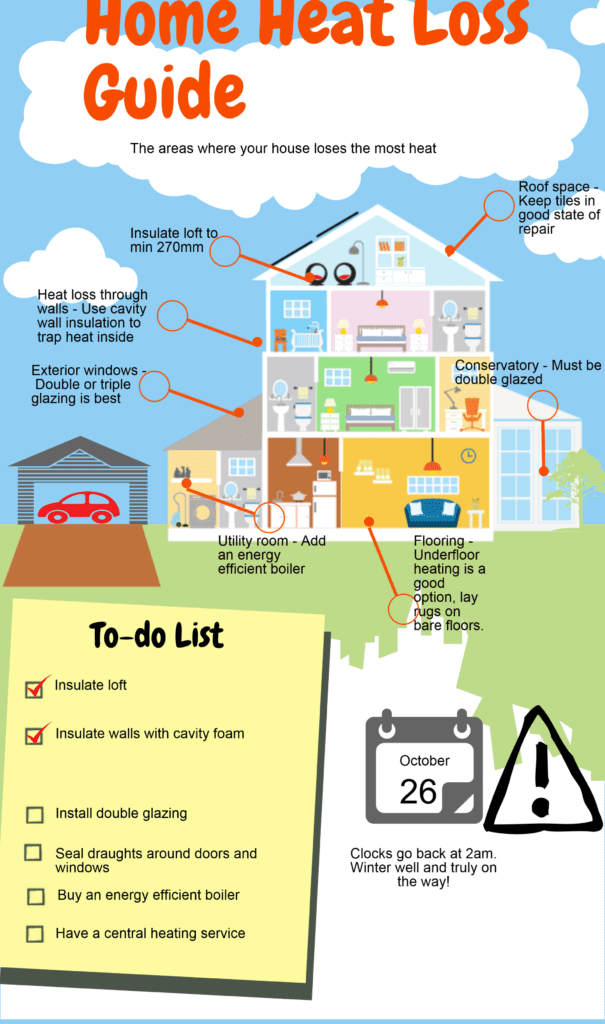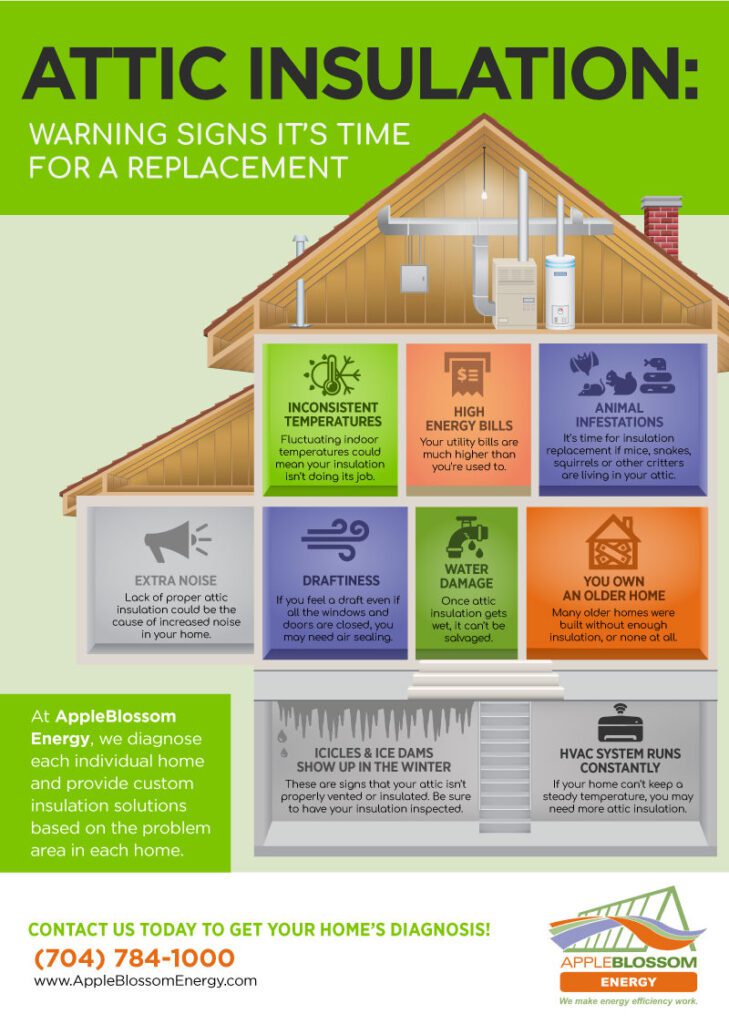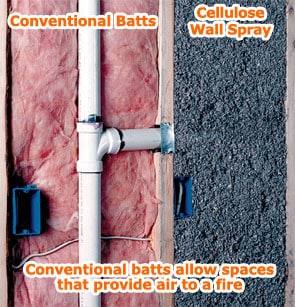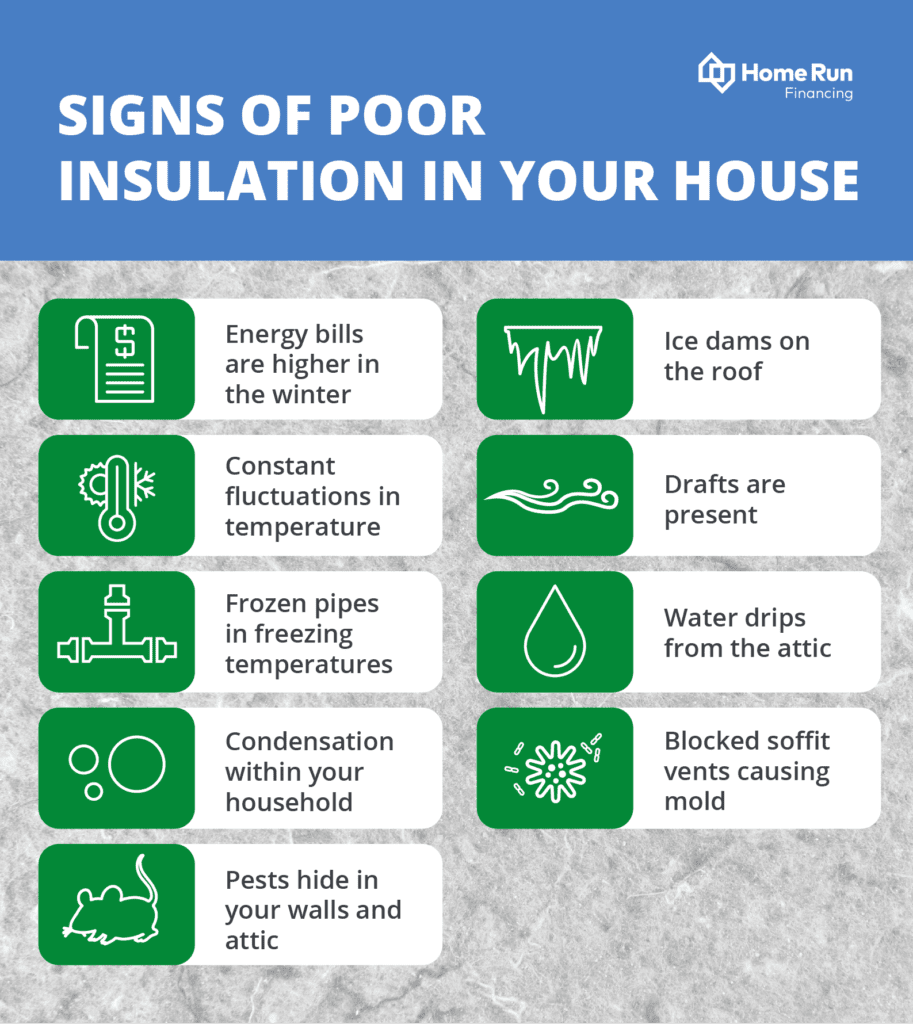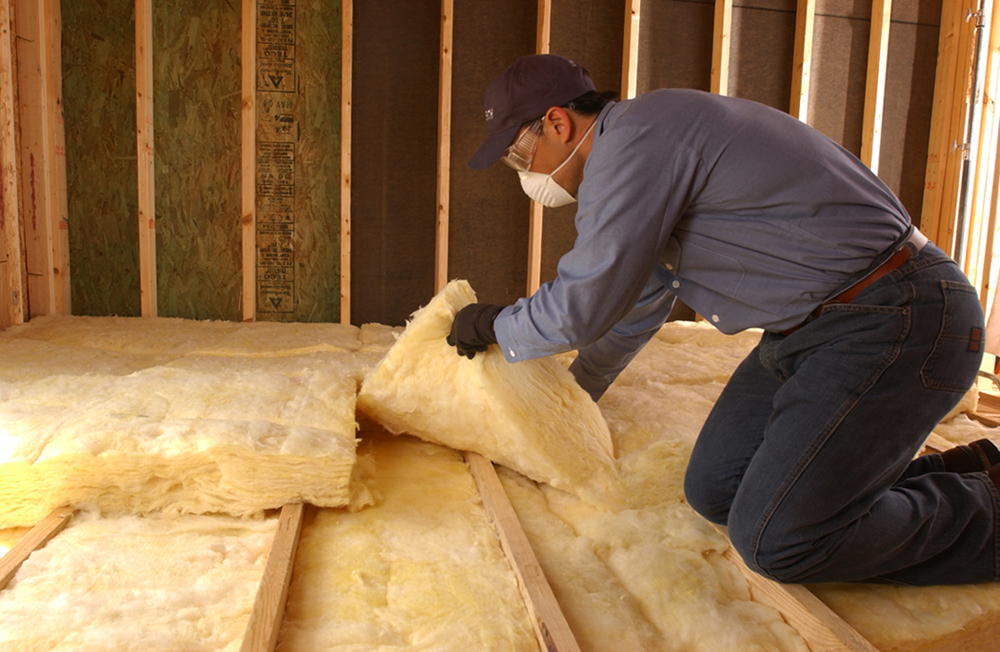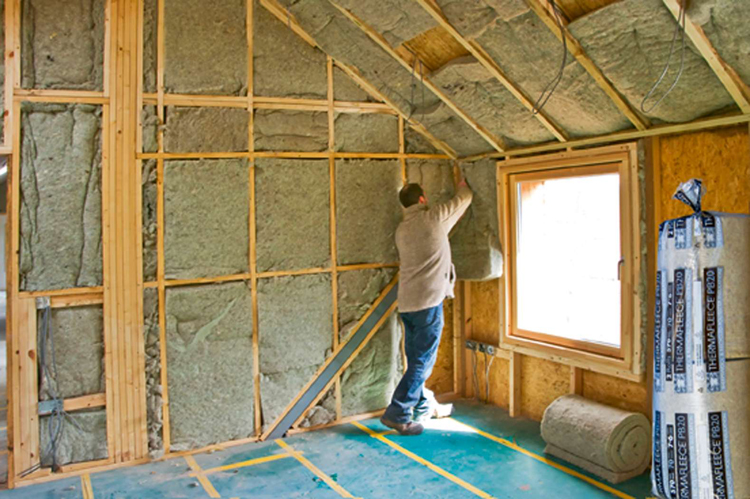Have you ever wondered where the majority of heat escapes from your cozy home, leaving you shivering and your energy bills skyrocketing? Look no further, as we uncover the secret behind the biggest heat loss in a house.


Roof
Insufficient insulation
One common area where heat can be lost in a house is through the roof. If your roof is not properly insulated, heat can escape through the attic and into the atmosphere. This can lead to higher energy bills and an uncomfortable home. Insulating your roof can help prevent this heat loss and improve the overall energy efficiency of your house.
Gaps or cracks
Another point of concern when it comes to heat loss in a house is the presence of gaps or cracks in the roof. These openings can allow warm air to escape while also allowing cold air to seep in. Not only does this contribute to heat loss, but it can also lead to drafts and increased energy consumption as your heating system has to work harder to compensate for the loss. Regularly inspecting your roof for any gaps or cracks and taking prompt action to seal them can help maintain a comfortable and energy-efficient home.
Lack of ventilation
Proper ventilation is key to maintaining a healthy and energy-efficient home. Inadequate ventilation in the attic can lead to a buildup of moisture and condensation, which can not only damage your roof but can also contribute to heat loss. Moisture in the attic can create an environment that allows for the growth of mold and mildew, which can affect the air quality in your home. Installing proper ventilation systems, such as roof vents or ridge vents, can help regulate the temperature in your attic, reducing heat loss and preventing potential damage to your roof and overall indoor air quality.
Windows and Doors
Single-pane windows
Windows and doors can be major culprits when it comes to heat loss in a house. Single-pane windows, in particular, are notorious for their poor insulation properties. These windows consist of a single layer of glass, which does not provide effective insulation against temperature changes. As a result, heat can easily escape through these windows, making your home less energy-efficient and potentially causing you to overwork your heating system. Upgrading to double-pane or energy-efficient windows can significantly reduce heat loss and improve the overall comfort of your home.
Poorly sealed windows and doors
Even if you have energy-efficient windows, if they are poorly sealed, they can still contribute to heat loss. Gaps and cracks around the windows and doors can let warm air out and cold air in, leading to drafts and increased energy consumption. Ensuring that your windows and doors are properly sealed with weatherstripping or caulking can make a noticeable difference in preventing heat loss and maintaining a more comfortable indoor environment.
Lack of weatherstripping
Weatherstripping is an essential component in preventing heat loss through windows and doors. It creates a seal between the movable part of the window or door and the frame, blocking the passage of air and reducing heat transfer. Over time, weatherstripping can wear out or become damaged, compromising its effectiveness in reducing heat loss. Regularly inspecting and replacing weatherstripping as needed can help maintain a tight seal and prevent unnecessary heat loss in your home.


Walls
Thin or poorly insulated walls
Just like the roof, walls can also be a significant source of heat loss in a house. If your walls are thin or poorly insulated, they may not provide sufficient resistance to heat flow, allowing warmth to escape. This can result in higher energy bills and difficulty maintaining a consistent and comfortable indoor temperature. Adding insulation to your walls, such as by installing insulation batts or blown-in insulation, can help reduce heat loss, enhance energy efficiency, and create a more comfortable living environment.
Unsealed electrical outlets and switches
Although often overlooked, unsealed electrical outlets and switches can also contribute to heat loss. These small openings in the wall can allow warm air to escape and cold air to enter, increasing heat loss and potentially creating drafts. Sealing the gaps around electrical outlets and switches with foam gaskets or outlet sealers can help minimize heat loss, improve energy efficiency, and create a more comfortable living space.
Floor
Uninsulated or poorly insulated floor
Heat can also be lost through the floor of a house, particularly if it is not adequately insulated. Uninsulated or poorly insulated floors allow heat to escape, making your home less energy-efficient and potentially leading to discomfort. Insulating the floor, especially in areas with crawl spaces or unheated basements, can help reduce heat loss and increase overall energy efficiency. This can result in more comfortable living conditions and lower energy bills.
Cracks or gaps
Similar to walls and roofs, cracks or gaps in the floor can also contribute to heat loss in a house. These openings can allow warm air to escape and cold air to enter, creating drafts and making your heating system work harder to maintain a comfortable temperature. Sealing any cracks or gaps in the floor, particularly in areas with exposed crawl spaces or basements, can help prevent heat loss and create a more energy-efficient home.
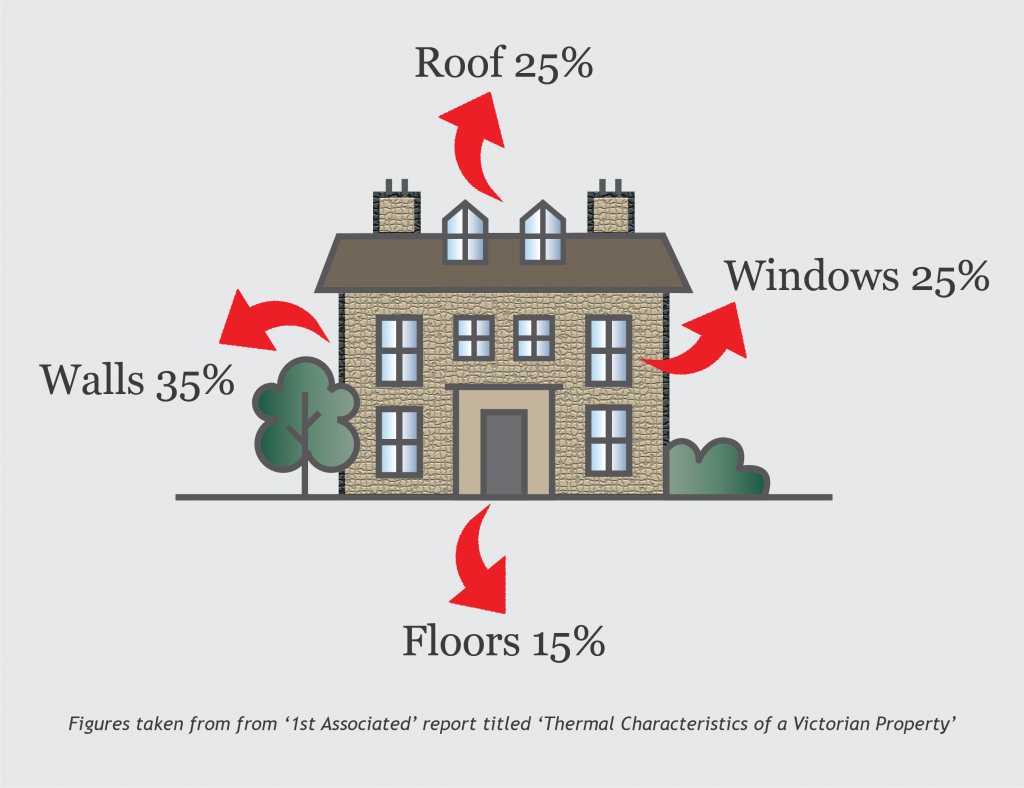

Chimneys and Flues
Leaky chimneys
Chimneys are often overlooked when it comes to heat loss in a house. However, if a chimney is not properly sealed or maintained, it can become a significant source of heat loss. Leaks in the chimney can allow warm air to escape, creating drafts and reducing the efficiency of your heating system. Regular inspection and maintenance of your chimney, including sealing any leaks or cracks, can help prevent heat loss and optimize the performance of your heating system.
Poorly insulated flues
Flues, which are the passageways that allow exhaust gases to exit through the chimney, can also contribute to heat loss if they are poorly insulated. Insufficient insulation around the flue can allow excess heat to escape, reducing the efficiency of your heating system and resulting in higher energy bills. Properly insulating the flue, such as with a flue liner or insulation wrap, can help prevent heat loss and improve the overall energy efficiency of your chimney and heating system.
Basement and Crawl Space
Uninsulated walls and floors
Basements and crawl spaces are often overlooked areas when it comes to insulation, yet they can be significant sources of heat loss. Uninsulated or poorly insulated walls and floors in these areas can allow heat to escape, making your home less energy-efficient and potentially leading to uncomfortable living conditions. Insulating the walls and floors of your basement or crawl space, either with insulation batts or foam insulation, can help reduce heat loss, improve energy efficiency, and create a more comfortable indoor environment.
Cracks or gaps
Just like in other areas of the house, cracks or gaps in the walls or floors of basements and crawl spaces can contribute to heat loss. These openings can allow warm air to escape and cold air to enter, creating drafts and making it harder to maintain a consistent indoor temperature. Sealing any cracks and gaps in the walls and floors of your basement or crawl space can help prevent heat loss, reduce drafts, and improve overall energy efficiency.
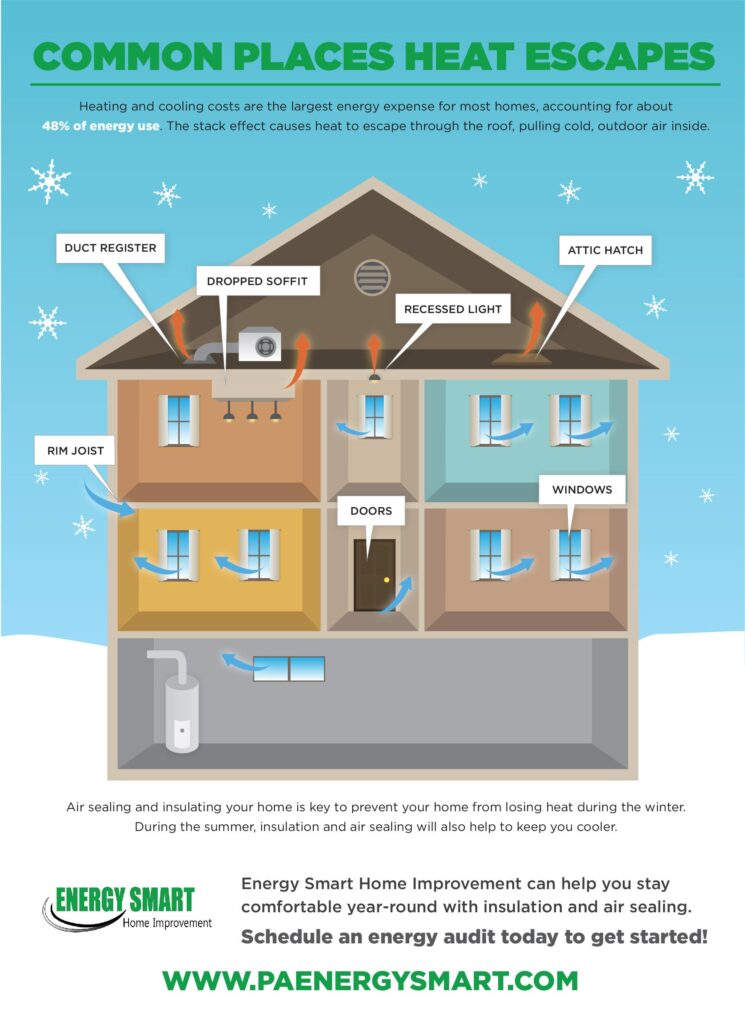

Ductwork
Leaky ducts
Ductwork is responsible for distributing heated or cooled air throughout your home. However, if the ducts are leaky, they can significantly contribute to heat loss. Leaks in the ducts allow conditioned air to escape into unconditioned spaces, such as crawl spaces or attics, instead of being delivered to the rooms where it is needed. This can lead to uneven heating, increased energy consumption, and potentially higher energy bills. Regularly inspecting and sealing any leaks in the ductwork can help prevent heat loss and improve the efficiency of your heating system.
Poorly insulated ducts
In addition to leaks, poorly insulated ducts can also contribute to heat loss in a house. Ducts that are not properly insulated can allow heat to escape, reducing the overall efficiency of your heating system. Insulating the ductwork, particularly in unconditioned spaces such as attics or crawl spaces, can help prevent heat loss and improve the efficiency of your heating system. By reducing heat loss, properly insulated ducts can contribute to lower energy bills and a more comfortable indoor environment.
HVAC Systems
Inefficient heating appliances
Inefficient heating appliances, such as furnaces or boilers, can contribute to significant heat loss in a house. Older models or systems that are not properly maintained may not operate at their optimal efficiency, leading to wasted energy and increased heat loss. Upgrading to more energy-efficient heating appliances or ensuring regular maintenance and tune-ups can help improve efficiency and reduce heat loss, resulting in lower energy consumption and greater comfort within your home.
Improper maintenance
Proper maintenance of your HVAC system is crucial in preventing heat loss. Filters that are dirty or clogged can impede airflow, causing your heating system to work harder and potentially leading to heat loss. Regularly changing or cleaning filters, scheduling professional maintenance inspections, and keeping up with routine system maintenance can help ensure that your HVAC system operates at its highest efficiency. This can not only prevent heat loss but also extend the lifespan of your heating equipment and promote overall energy savings.
Leaky ducts
As mentioned earlier, leaky ducts can be a significant contributor to heat loss in a house. Addressing any leaks in the ductwork and ensuring proper insulation can help prevent heat loss and improve the efficiency of your HVAC system. By delivering conditioned air more effectively and preventing it from escaping into unconditioned spaces, sealed and insulated ducts can help maintain a comfortable and energy-efficient indoor environment.
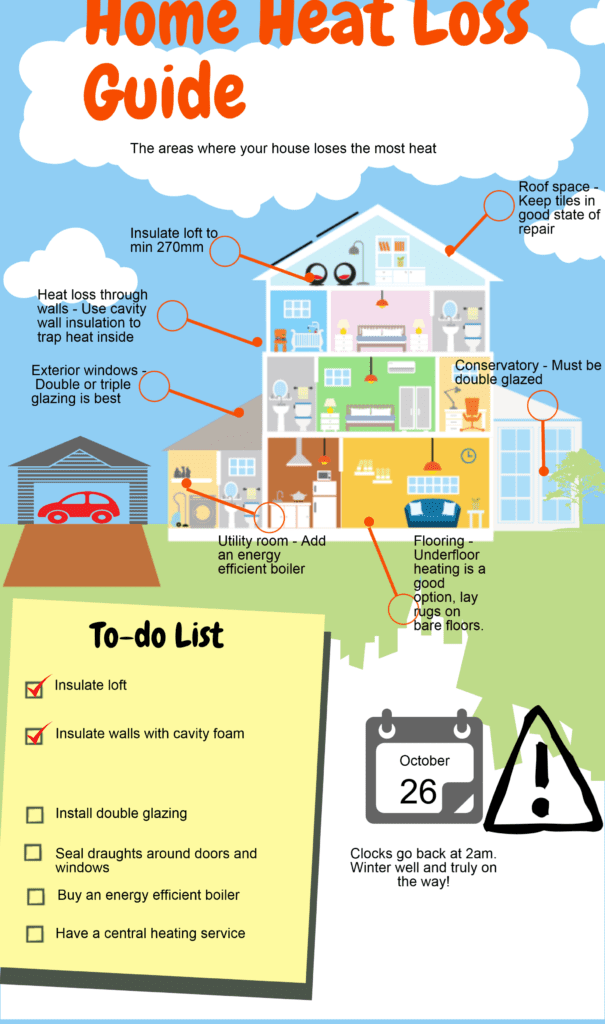

Air Leaks
Gaps around pipes and wires
Gaps around pipes and wires, particularly where they enter or exit your house, can be a source of air leakage and heat loss. These small openings can allow warm air to escape and cold air to enter, contributing to drafts and energy inefficiency. Sealing these gaps with caulk or foam insulation can help prevent air leakage, reduce heat loss, and improve the energy efficiency of your home.
Vents and fans
Vents and fans, such as bathroom exhaust fans or kitchen range hoods, can also be areas where heat loss occurs. If these openings are not properly sealed or insulated, air can escape and cold air can enter when they are not in use. Ensuring that vents and fans are properly sealed and insulated when not in use can help prevent heat loss and promote energy efficiency in your home.
Recessed can lights
Recessed can lights, commonly found in ceilings, can be another source of heat loss. These lights create openings in the ceiling, which can allow warm air to escape and cold air to enter. In addition to contributing to heat loss, poorly insulated or unsealed recessed can lights can also create a fire hazard. Using airtight and insulated covers for recessed can lights can help prevent heat loss, improve energy efficiency, and enhance safety within your home.
Ventilation
Improperly sealed attic bypasses
Attic bypasses are areas in the attic where warm air can leak into unconditioned spaces, leading to heat loss and reduced energy efficiency. These bypasses can occur around chimneys, plumbing stacks, or electrical wires, among other areas. Properly sealing and insulating these attic bypasses can help prevent heat loss, improve energy efficiency, and maintain a more comfortable indoor environment.
Blocked or closed-off vents
Blocked or closed-off vents can impede the proper flow of air in the house, leading to poor ventilation and potential heat loss. Ensuring that vents, such as supply and return vents, are not obstructed or closed can help promote proper airflow, preventing heat loss and maintaining adequate ventilation. Proper ventilation is essential for maintaining good indoor air quality and overall comfort within your home.
In conclusion, heat loss in a house can occur through various areas, including the roof, windows and doors, walls, floor, chimneys and flues, basement and crawl space, ductwork, HVAC systems, air leaks, and ventilation. By addressing these areas and taking necessary measures to minimize heat loss, such as improving insulation and sealing gaps, you can create a more energy-efficient and comfortable living environment while also reducing your energy bills. Regular maintenance, inspections, and upgrades can help optimize the performance of your home’s heating and cooling systems, preventing unnecessary heat loss and promoting overall energy efficiency.

